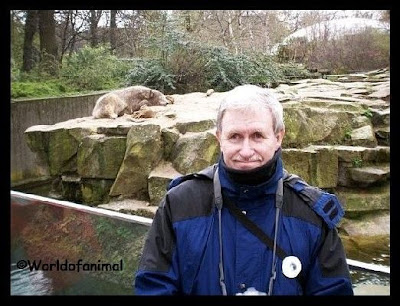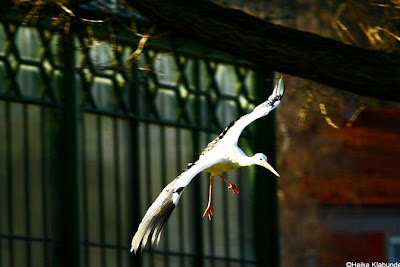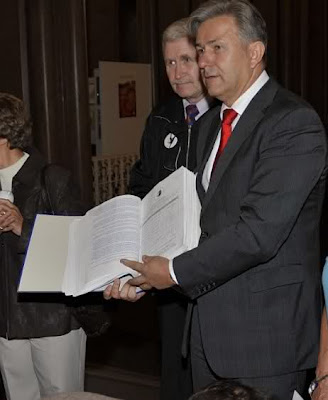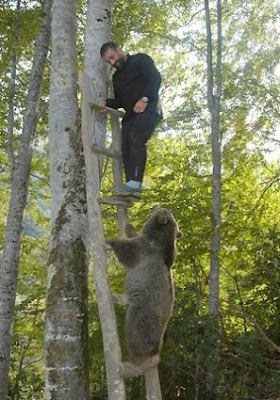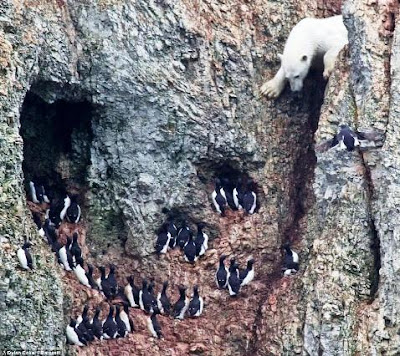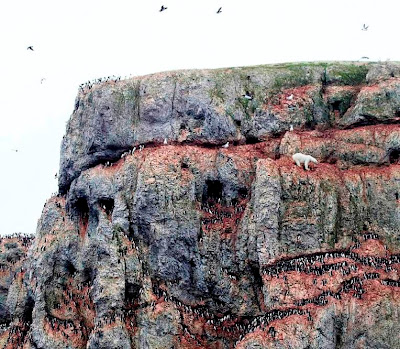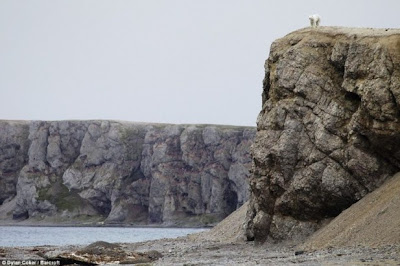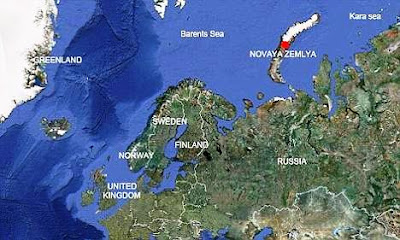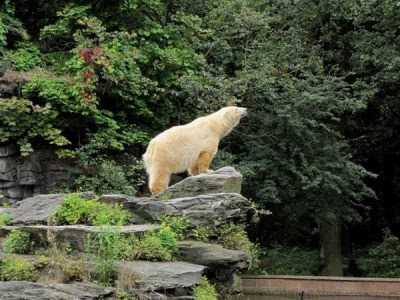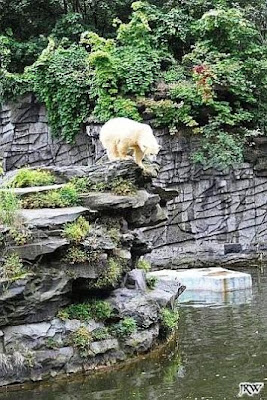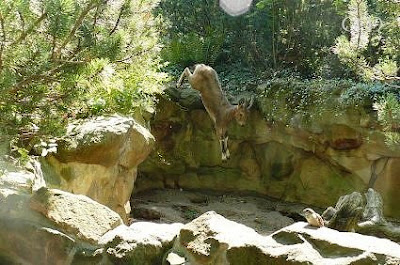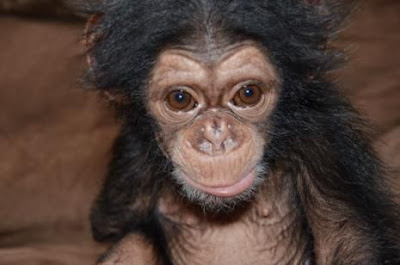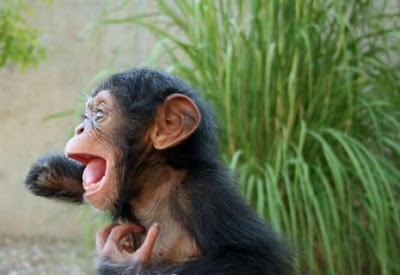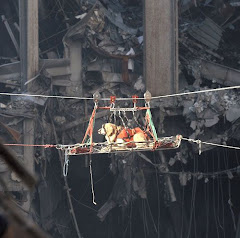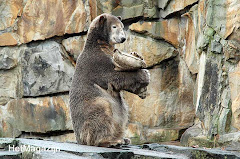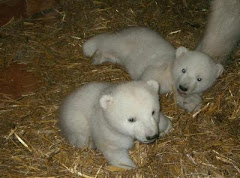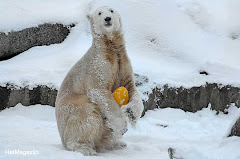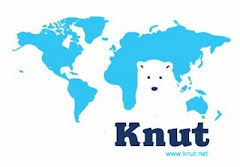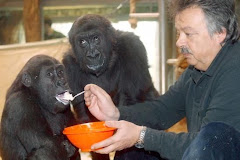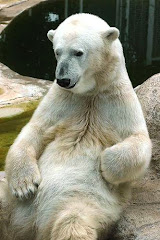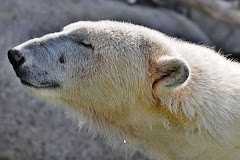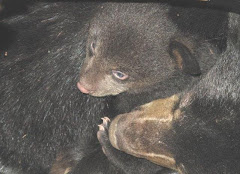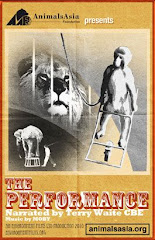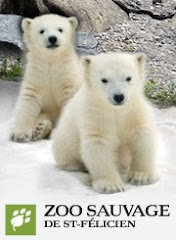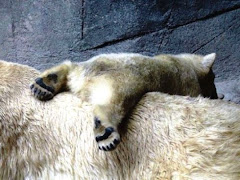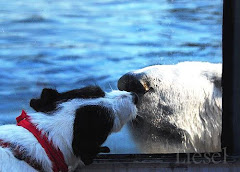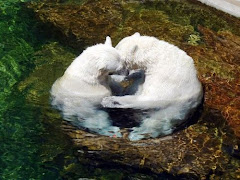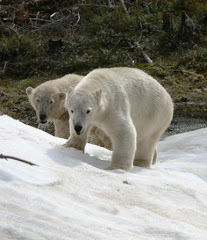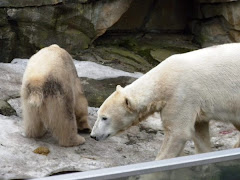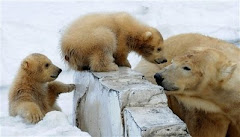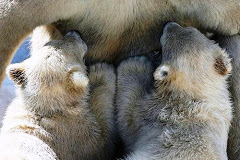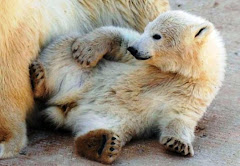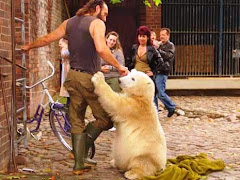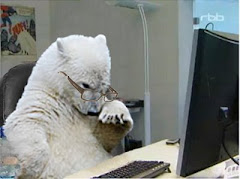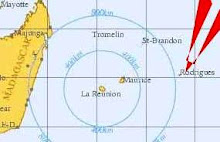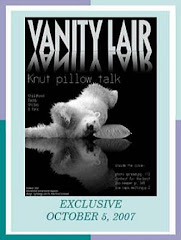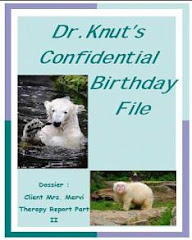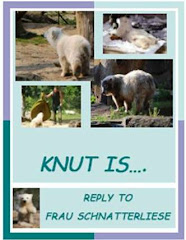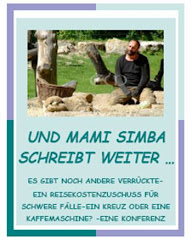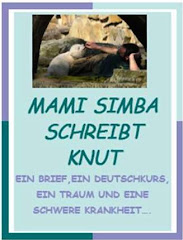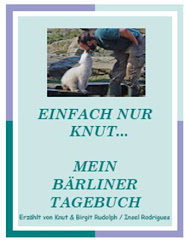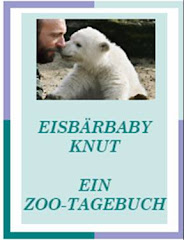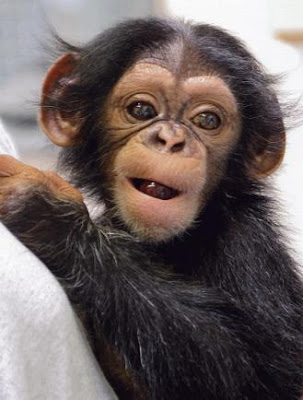 Belated Happy Birthday, little Siri !
Belated Happy Birthday, little Siri !
She turned one on 18 August and her first year was everything but easy...
Photo:Oklahoma City Zoo
Dies ist die Geschichte der kleinen Siri, die bereits 2 mal gestorben war, und bei der niemand überrascht gewesen wäre, hätte sie, so untergewichtig wie sie war, ihren Kampf aufgegeben.
Ihr Start ins Leben begann ungewöhnlich. Vor einem Jahr im August überraschte Susie, damals 56 Jahre alt, den Sunset Zoo und die Welt, dass sie in ihrem Alter plötzlich nochmal ein Jungtier auf die Welt brachte. Sie, die eigentlich nicht mehr hätte schwanger werden sollen.
Susie hatte wie alle Schimpansen in akkredierten Zoos ab ihrem 40. Lebensjahr Verhütungsmittel bekommen, die dann nicht lange zuvor abgesetzt wurden, weil man im Sunset Zoo befürchtete, dass die Langzeiteinnahme in ihrem Alter das Risiko für Herzerkrankungen und Schlaganfälle erhöhen würde. Niemand dachte ernstlich, dass eine Schimpansin in diesem biblischen Alter noch einmal schwanger werden könnte.
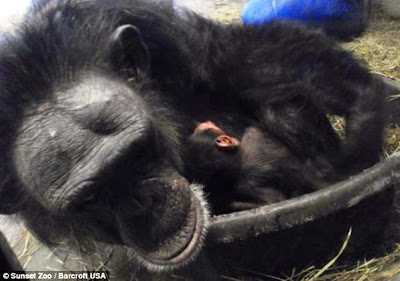
Her birth was an unlikely event to start with. Siri was born a year ago this week to a 56-year-old chimp named Susie who really wasn't supposed to be pregnant in the first place.
Susie had been on birth control for years; like all chimps in accredited zoos, she was put on birth control for life at age 40. But they took her off it because veterinarians worried that at her old age, her long-term birth control use might put her at a higher risk for heart attack or stroke, said Scott Shoemaker, director of the Sunset Zoo in Manhattan, Kansas. Surely, everyone thought, a chimp that old wouldn't get pregnant.
"Ganz offensichtlich wurde sie aber schwanger, sie war nicht post-reproduktiv. Susie und ihre Schwangerschaft waren gesund. Sie bekam das Jungtier inmitten der anderen Schimpansen im Zoo, Susie kümmerte sich um Siri und stillte sie. Doch als die Monate ins Land zogen, wurden die Pfleger im Zoo immer besorgter, denn Siri wuchs nicht. Sie baten andere Schimpansenexperten um Rat.
Im April wurden Siri und Susie einer ganzen Menge Tests unterzogen, wobei herauskam, dass Susie nicht genügend Milch produzierte, und die Milch, die sie hatte, enthielt nicht die Nährstoffe, die das kleine Schimpansenbaby benötigt hätte.
An sich wäre die erste Wahl gewesen, Siri bei ihrer Mutter zu belassen, doch da Susie nicht für ihr Baby sorgen konnte, obwohl sie es versuchte, musste eine andere Lösung gefunden werden. Verglichen mit Menschenjahren war Susie zudem um die 100 Jahre alt. 
“Obviously, she got pregnant,” Shoemaker said. “She was not post-reproductive. But Susie and her pregnancy were healthy. She gave birth among the other chimpanzees at the zoo, and she cared for and nursed her baby, Siri.
But as the months went by, Siri wasn't growing, Shoemaker said. Zookeepers were worried. They asked other chimp experts for advice. In April, Siri and Susie were given a battery of tests. It turns out, Susie wasn't producing enough milk, and the milk she was offering Siri didn't have the nutrients that the baby chimp needed.
The first choice would be to leave Siri with her mother, said Steve Ross, chairman of the chimpanzee Species Survival Plan, a nationwide breeding strategy designed to keep the chimp population healthy and genetically diverse.But Susie couldn't care for Siri, even though she was trying. In human terms, Susie would be about 100 years old, he said. 
Siri at 2 months, still looking well, climbing about the indoor section of the chimpanzee exhibit at the Sunset Zoo on the day her name was proposed for a voting contest, Siri means Secret in Suaheli
Photo:Matt Binten
"Siri hätte eine Leihmutter benötigt, ein Schritt, der nur alle paar Jahre einmal möglich ist", sagt Ross. "Bundesweit hatten 3 Zoos Schimpansinnen, die die Leihmutter-Rolle hätten ausfüllen können, darunter Oklahoma City."
Nach vielen Diskussionen und Debatten wurde die Entscheidung getroffen, Siri dorthin zu bringen, denn der Oklahoma City Zoo war wirklich zuversichtlich, dass sie es schaffen könnten.
Siri wog 3 ½ Pfund, als sie am 20. April im Zoo in Oklahoma ankam. Mit 8 Monaten wog Siri so viel wie ein Neugeborenes. "Sie litt an schwerer Unterernährung", sagte D'Agostino. "Das Gehirn leidet normalerweise ebenfalls darunter."
Siri would need a surrogate mother, a move that happens only once every few years, Ross said.Three zoos nationwide had chimps that could fill the surrogate role, including Oklahoma City, Ross said. After much discussion and debate, the decision was made to move Siri.“Oklahoma City really took a big leap forward by saying they would be able to take on this role,” Ross said.
Siri weighed 3½ pounds when she arrived at the Oklahoma City Zoo on April 20. At 8 months old, Siri weighed as much as a newborn. “There was severe malnutrition,” D'Agostino said. “The brain suffers from that.”
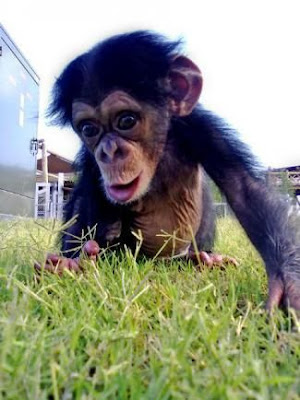
For about six weeks, Siri had a feeding tube taped to her head
that went through her nose and into her stomach.
Photo:Oklahoma City Zoo
Tierarzt-Mitarbeiter vermuteten eine Art genetische Störung, die sich in Blutananalysen und Röntgenaufnahmen nicht zeigen konnten. D'Agostino nahm Verbindung auf zu einem Harvard-Forscher, der Siris Gene mit denen anderer, normalen Schimpansen verglich.
Überraschenderweise zeigte sich, dass Siris Gene völlig normal sind. Aber es gab weitere Herausforderungen für sie. Zoomitarbeiter ließen eine ganze Reihe von medizinischen Experten auftreten, die beim Aufbau ihrer Muskeln halfen, die ihre Entwicklung überprüften und sie ermutigten zu essen. "Ihr Kopf begann sich auszufüllen", sagte Davis, verantworlich für die Affen im Zoo. "Sie wuchs langsam in einen Körper hinein, der normalen Proportionen entsprach. Es war cool mitanzusehen." Es war Zeit, sie an die anderen Schimpansen heranzuführen. Dabei hat sie ihren Arm verloren. -
Veterinary staff suspected some type of genetic disorder that blood work and X-rays couldn't show. D'Agostino got in touch with a Harvard researcher who could compare Siri's genome to the genetic maps of other, normal chimps. Surprisingly, Siri's genes are perfectly normal, D'Agostino said. But she had plenty of challenges. Zoo officials called on an array of medical experts from throughout the metro to help build her muscles, check her development and encourage her eating. “Her head started filling out,” said Davis, the ape supervisor. “She grew into normal proportions. It was cool to see.” It was time for her to meet the other chimps. That's when she lost her arm.
Siri wurde den anderen Schimpansen durch eine Art Absperrungsdraht vorgestellt. Kito, die 24-jährige Schimpansin war am meisten interessiert. Vor drei Jahren wäre Kito gerne Ersatzmutter für ein kleines Schimpansenmädchen namens Zoe geworden, deren Mutter während der Geburt plötzlich verstarb. Aber eine andere Schimpansin war bereits mit dem Baby eine Bindung eingegangen. So bedeutete das Aussehen von Siri eine ganz besondere Aufregung. Kito saß am Netz, ängstlich dabei, die kleine Schimpansin anzubeten. Sie berührten sich und sahen einander an. Siri streckte den Arm aus und Kito zog ihn. "Kito wollte sie und zog einfach", sagte Davis. "Ihr Arm war so klein. Er konnte dies einfach nicht verpacken. Kito wollte ihr nicht wehtun. "Siris Unterarm war zerstört . Aus Verwirrung und Angst zog sich Kito zurück. Zoo Mitarbeiter brachten sie in die Tierklinik des Zoos und ließe einen orthopädischen Chirurgen kommen. Dann hörte Siris Herz auf zu schlagen. Sie wurde wiederbelebt. Dann stoppte ihr Herz noch einmal.Die Mitarbeiter des Zoos sprachen darüber, ob dies nicht alles zu viel war. Und wenn sie überlebte, würde es ein lebenswertes Leben sein? Würde sie es schaffen? Alle sagten, 'Lassen wir Siri entscheiden'", sagte Davis. "Es war einfach erstaunlich, dass sie sogar zweimal zurückkam. Dieser Schimpanse wollte wirklich leben. " -
Siri was introduced to the other chimps through a fence-like mesh. Kito, a 24-year-old female, was the most interested. Three years ago, Kito had wanted to be a surrogate mother to a chimpanzee named Zoe, when the chimp's mother died suddenly during childbirth. But another female chimp had already bonded with the baby. So the appearance of Siri was especially exciting. ... Kito sat at the mesh, anxiously adoring the little chimp. They touched and looked at one another. Siri stretched out her arm, and Kito pulled. “Kito wanted her and just pulled,” Davis said. “Her arm was just so small. It just couldn't take it. Kito did not want that to happen.”Siri's forearm was destroyed.Kito retreated out of confusion and fear, Davis said. Zoo staff whisked her to the zoo's veterinary hospital and called in an orthopedic surgeon.Then Siri's heart stopped beating. Veterinarians revived her with CPR. Her heart stopped again. She was revived again.Zoo staff talked about whether it was all too much. If she survived, would it be a life worth living? Would she make it? Everybody said, ‘Let's let Siri decide,'” said Davis. “It was amazing that she even came back twice. This chimp really wanted to live.”
Siris Armamputation oberhalb des Ellbogens war erfolgreich, und wieder einmal überraschte die kleine Schimpansin alle um sie herum. Sie begann gleich wieder zu essen und kümmerte sich nicht die Bohne um ihren verkürzten Arm. Siri wurde kräftiger und war schließlich soweit, ohne Zaunabtrennung zu den anderen Schimpansen zu gehen.
Kito - diejenige, die ihr den Arm versehentlich gebrochen hatte - nahm sie sofort unter ihre Fittiche. Eine weitere erwachsene Schimpansin, Mwami, war ebenfalls in sie vernarrt. Schließlich machte sie auch noch die Bekanntschaft mit Zoe, einem anderen Schimpansenjungtier des Zoos.
Auch die anderen Schimpansen kümmern sich keinen Deut um ihren fehlenden Arm, sagte Davis. Sie spielen mit ihm, säubern ihn und nehmen ihn in ihren Mund. Ein Schimpanse schüttelt den Arm sogar wie eine Hand.-
Siri's arm was amputated above the elbow successfully, and once again, the chimp surprised everyone around her. She went right back to eating and didn't give her shortened arm a second thought. Siri grew strong and eventually was ready to go in with other chimps without the fence separation.
Kito — the one who crushed her arm accidentally — took her under her wing immediately. Another adult chimp, Mwami, doted on her, too. Eventually the zoo's young chimp, Zoe, was introduced.The chimps don't mind her missing arm one bit, Davis said. They play with it, groom it and mouth it. One chimp even shakes it like a hand.
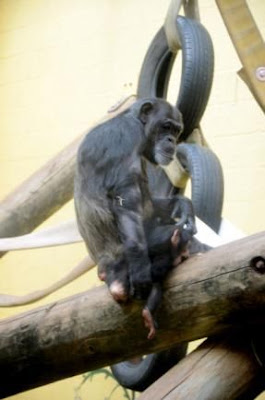
Siri mit ihrer Adoptivmutter Kito
Photo: Oklahoma City Zoo
Ihre Adoptivmutter ist ganz besonders liebevoll. "Kito weiß immer, wann Siri etwas Extra- Unterstützung braucht", sagt Davis. Kito erlaubt Siri ganz weit oben auf ihrem Hals zu reiten, so dass Siri sich mit ihrem kürzeren Arm daran festhalten kann. Die anderen Schimpansen wird Siri nach und nach kennenlernen.
Abhängig von ihrer Gesundheit und dem Wetter kann es sein, dass Siri vielleicht schon in einigen Wochen auch von Besuchern gesehen werden kann. Laut Tierärztin ist sie gesund und wächst nun stetig. Tierärzte und Pfleger haben sie immer im Auge, um sicherzustellen, dass die Entwicklung in die richtige Richtung geht. "Ich denke, sie wird ganz normal sein. Einfach ein wenig kleiner", sagt D'Agostino. "Sie ist eine starke kleine Schimpansin."
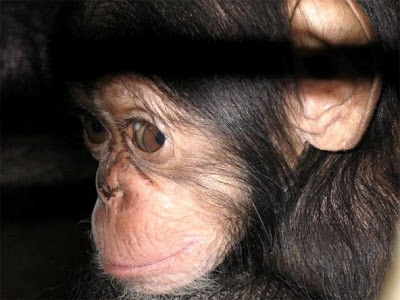
Her adopted mother is especially kind. “Kito is so good about knowing when Siri needs the extra support,” Davis said. Kito allows Siri to ride high up on her neck, so Siri can use her shorter arm to wrap around her mother's neck.The other chimps will be introduced one by one, Davis said.
Siri could come out on public display in the next couple of weeks depending on her health and the weather, Davis said.She's healthy and growing steadily, said D'Agostino, the veterinarian. Vets and keepers still keep a close eye on her to make sure she's going in the right direction.“I think she'll be normal. She'll just be small,” D'Agostino said. “She's a tough little chimp.”
Photo: Oklahoma City Zoo
Und hier zum Abschluss noch ein weiteres Foto von Michael Marish, einem Mitarbeiter des Sunset Zoos, über das ich mich ganz besonders gefreut habe und wo man Susie 10 Tage nach der Geburt Siri stillen sieht. Die Tage nachdem man Siri von ihrer Mutter getrennt hatte, waren für die alte Dame nicht ganz einfach, auch Vater Julian und der Rest der Gruppe (z.Zt. 1 Männchen, 3 Weibchen und 1 weibl.Jungtier von ca. 3 Jahren) nahmen den Mitarbeitern die Trennung ein paar Tage ganz schön übel.Mittlerweile hat sich aber alles normalisiert, und Susie geht es auch mit 57 Jahren gut. Im Sunset Zoo malen die Schimpansen und Susie nimmt immer noch an derlei Enrichment- Aktivitäten teil. Susie ist die drittälteste AZA registrierte Schimpansin weltweit und die Älteste überhaupt, von der Nachwuchs bekannt ist.-
And here a photo which I cherish a lot, Susie nursing Siri about 10 days after birth, taken by Michael Marish who works at Sunset Zoo. After Siri had to be separated from Susie, she mourned a lot, even Julian, the father and the rest of the group (currently 1 male, 3 females and a young chimp girl of 3 years) had been rather upset for a while. In the meantime everything is back to normal, and Susie is doing fine even at 57. She still takes part in enrichment activities as painting. She is the 3rd oldest chimp in all of the AZA Zoo's and the oldest on record to give birth to a live healthy baby!
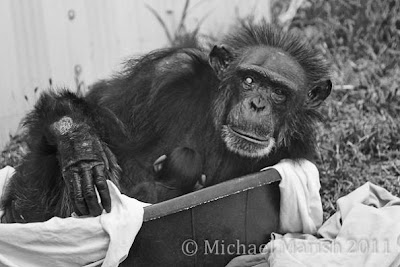
Baby chimps ride on their mother's back until they are weaned, usually around when they are age 3. However, they typically do not leave their mothers until they are around 10 years old. Chimpanzees can live for 45-60 years.
Sources & related:
- Siri Update from Sunset Zoo in Manhattan Kansas /24.08.2011
- Vistors to Sunset Zoo can donate to name baby chimpanzee/Kansas State Collegian 18.10.2010
- Medical experts volunteer to help chimp/News OK 22.08.2011
- Chimp overcomes odds to thrive at Oklahoma City Zoo/News OK 22.08.2011
- photos & Video & more photos on facebook
- Chimp at 56 stuns Zoo staff giving birth to healthy baby girl/Daily Mail 27.08.2010
 1997 - 11.09.2001
1997 - 11.09.2001
